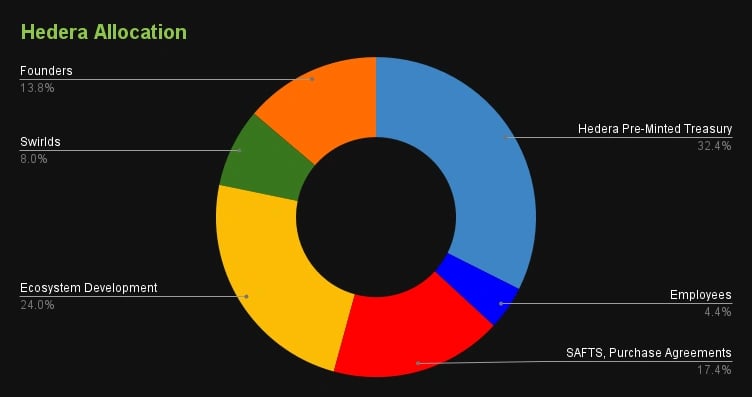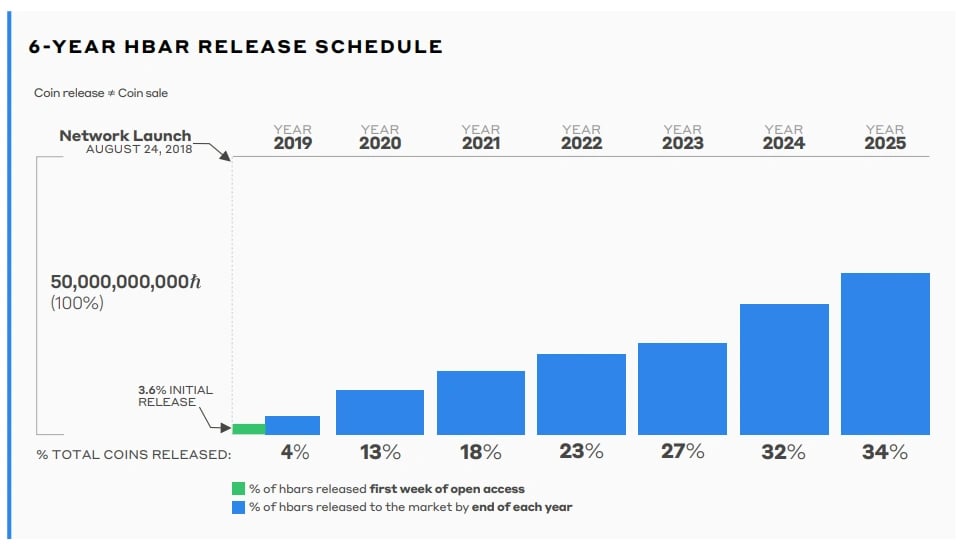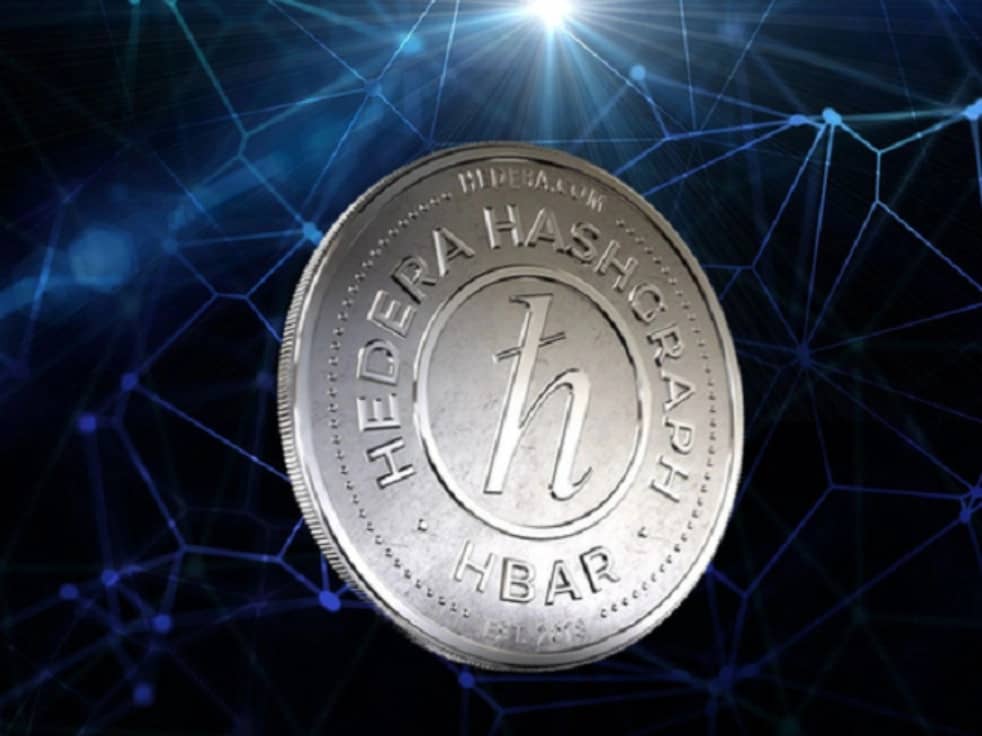위키 구독하기
Share wiki
Bookmark
HBAR
HBAR
HBAR은 Hedera Hashgraph 네트워크의 기본 통화로, 속도와 보안을 동시에 향상시키기 위해 블록체인 대신 해시그래프 합의 메커니즘을 사용하는 오픈소스 분산형 공개 원장입니다. HBAR은 분산형 애플리케이션의 거래를 가능하게 하고, P2P 거래를 지원하며, 잠재적인 악의적인 행위자로부터 네트워크 보안을 유지합니다. [3]
토큰 경제학
Hedera는 2019년 9월에 HBAR의 초기 토큰 출시를 진행했습니다. HBAR의 최대 공급량은 50,000,000,000개로 제한되며, 생성 이후 인플레이션 유형의 발행률을 가지고 있습니다. [2]
32.41%는 Hedera 사전 발행 재무부에, 23.99%는 생태계 개발에, 17.4%는 SAFTS, 구매 계약에, 13.8%는 설립자에게, 7.96%는 Swirlds에, 4.44%는 직원에게 할당되었습니다. [2]

Hedera의 경제 백서[5](2020년 6월 발행)에 따르면, 2025년까지 약 170억 3천만 개의 HBAR이 유통될 것으로 예상되며, 이는 총 공급량의 34%에 해당합니다. [1][5]
네트워크의 느린 출시 일정은 안정적이고 질서 있는 성장을 보장하고, 안전성을 저해하지 않고 확장할 수 있도록 설계되었습니다. 또한, 출시 일정은 예상되는 사용자 요구를 충족하고 코인의 과도한 투기를 방지하도록 맞춰져 있습니다. [5]

유틸리티
$HBAR은 스마트 계약, 파일 저장소 및 일반 거래와 같은 Hedera 서비스를 구동하는 연료입니다. 두 번째로, HBAR 사용자는 토큰을 스테이킹하여 플랫폼의 무결성 유지에 기여할 수 있으므로 네트워크 보안에 도움이 됩니다. [2][1]
네트워크 연료
$HBAR은 개발자가 HBAR 전송, 펀지블 및 대체 불가능 토큰 관리, 데이터 로깅과 같은 다양한 네트워크 서비스 비용을 지불하는 데 사용됩니다. 네트워크에 제출된 거래는 HBAR을 사용하여 보상되며, 이는 네트워크 노드가 사용한 대역폭, 컴퓨팅 및 저장 용량에 대한 보상으로 사용됩니다. [4]
네트워크 보호
Hedera의 공개 네트워크는 지분 증명 메커니즘을 통해 합의에 도달하기 위해 거래에 대한 투표 가중치를 결정하는 데 사용할 수 있는 스테이킹 또는 프록시 스테이킹이 가능한 $HBAR을 사용합니다. $HBAR을 사용한 이 가중 투표 시스템은 악의적인 행위자가 합의에 영향을 미치는 것을 어렵고 비용이 많이 들도록 설계되었으며, 네트워크의 총 $HBAR 공급량의 3분의 1 이상을 소유하고 스테이킹해야 합니다. 이는 네트워크 운영 첫 5년 동안은 불가능할 것입니다. [4]
잘못된 내용이 있나요?
